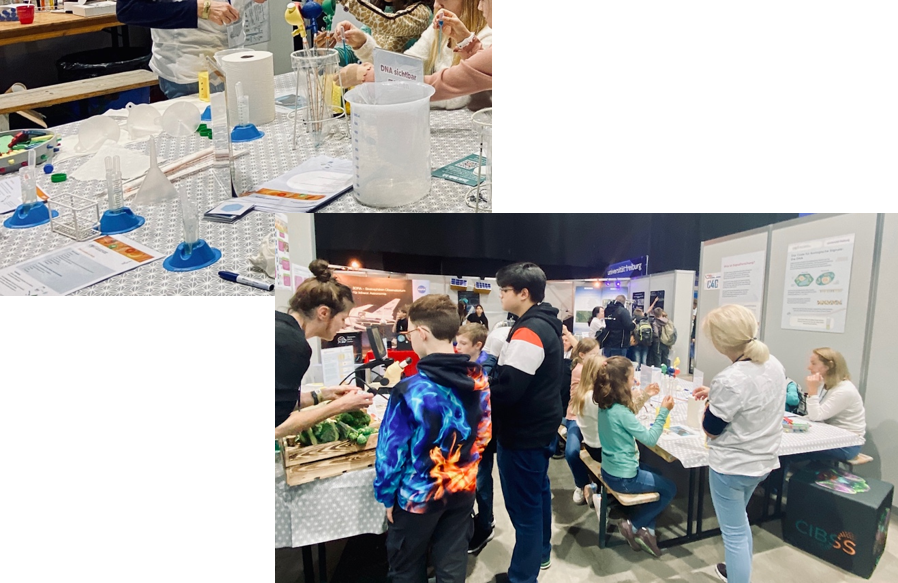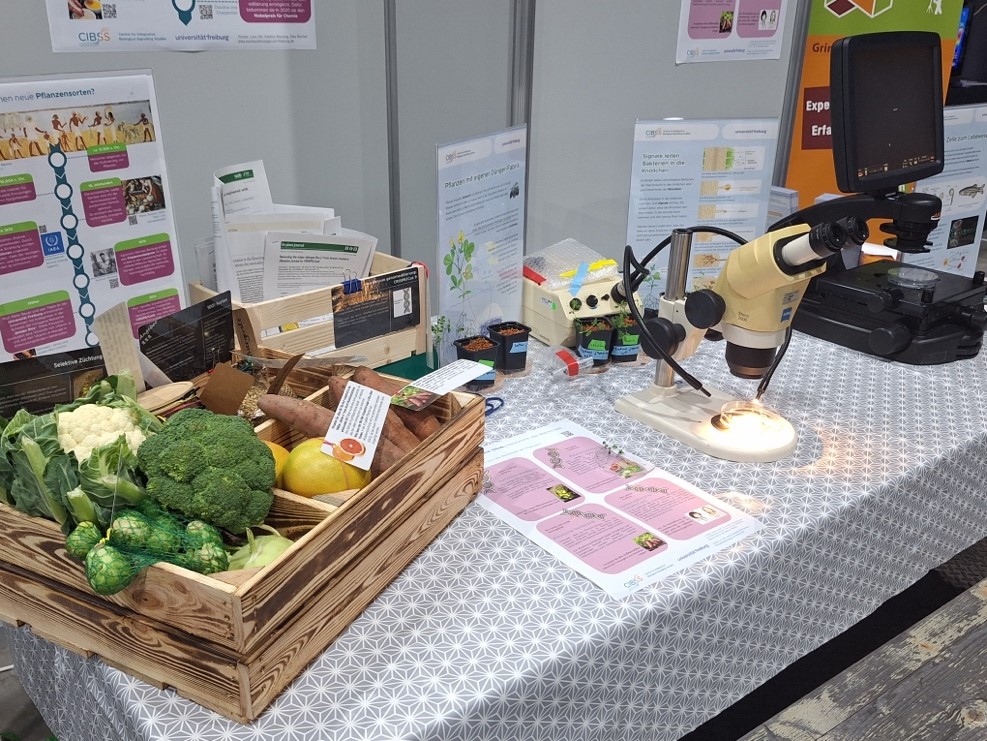From 24 to 26 October 2024, CIBSS presented its research at the Science Days at Europa-Park Rust and offered the audience of science enthusiasts exciting insights into the world of genetics, cell and molecular biology, developmental biology, plant research and biotechnology. The STEM Festival provided a vibrant platform to bring our research to life and inspire the next generation of researchers. Together with the dedicated teams of the Signalling Factory & Robotics Core Facility and Dr. Elke Barbez's working group, we were able to bring complex scientific content to life in experiments and exhibits and opened windows into the fascinating world of biological signalling studies.


Opening windows into Signalling Science
CIBSS at the Science Days 2024 at Europa-Park Rust

Image: Sarah Kempff/Freiburg
Bringing molecular basics to life: DNA and cell communication
The complex world of DNA was one highlight of our stand. In the mini-laboratory we provided, visitors could isolate their own DNA (extracted from the mucous membrane of the mouth) or that of fruit, they could view this otherwise invisible structure with the naked eye and take it home as a souvenir in a small vial on a chain.
Insights into biological signalling studies: cell development, bacterial symbioses and plant breeding for nutrition
With the help of several more knowledge stations, we illustrated key issues and methods from CIBSS research. One highlight was the demonstration of embryonic development using zebrafish larvae, which visitors were able to observe live under a microscope. This provided a vivid illustration of the developmental biology research questions that the signalling researchers at CIBSS are investigating.

Image: Dr. Elke Barbez/Freiburg
Our examples from plant research focused on how the genetic material of plants shapes their characteristics. Using a box full of a variety of fruit, vegetables and cereals, we explained how humans have been selecting plants for certain traits for centuries in order to influence their breeding. Additional infographics showed how natural mutations, targeted breeding and modern genetic engineering are shaping our crops today and how important this is for food security.
On top of that, we used small clover plants we had brought along to demonstrate the benefits of symbiosis with certain bacteria for nitrogen uptake, which is important for healthy plant growth. This allowed us to illustrate the opportunities that research into such 'workgroups' offers for agriculture in the future.
For those who were unable to attend, here are the instructions for DNA isolation to copy at home.
Would you like to get an insight into our day-to-day research and the questions we are investigating? Then get in touch with us for school visits, teacher trainings or internships by writing to contact(at)cibss.uni-freiburg.de.



